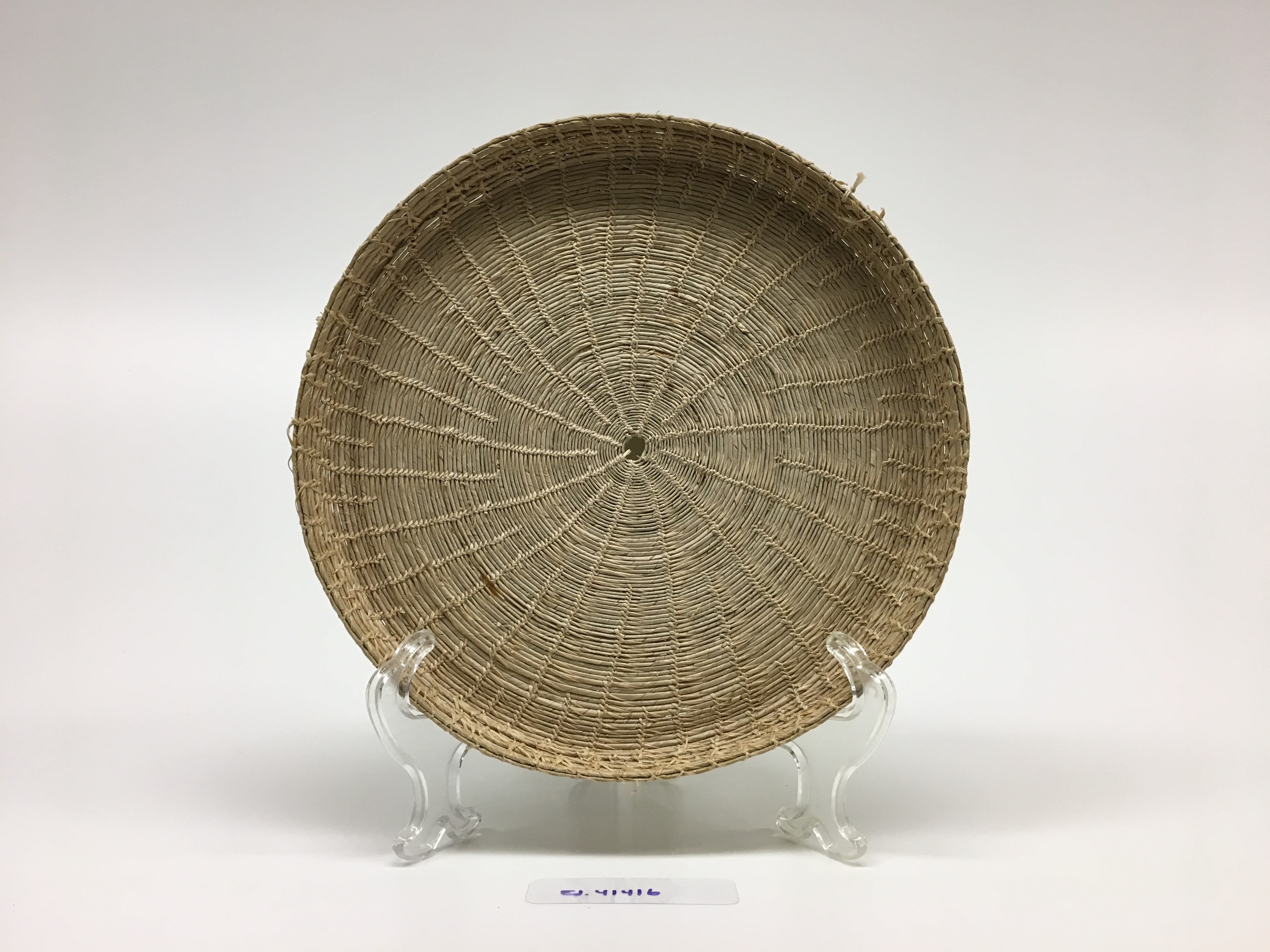
Iep (basket)
mālwe (coconut frond midrib)
maan̄ (pandanus leaves)
kimej (coconut leaves (from shoot)
ED# 4141 b
Accessioned November 1954.
Iep in ej juon iaan iep ko me ekkā kōjerbale n̄an nene n̄an jabdewōt m̗weiuk ko jān kannene im jālele n̄an men aorōkrōk ko ilo juon em̗. Mālwe ko rej kori kōn maan̄ eo. Innām rej karōki iturin doon ilo aer tāte bwe en wal̗o̗k an doulul l̗ōmān. Rej lukwōji mālwe ko kōn kimej eo. Rej āliji bun̄tōn kein m̗ae iien eo ewal̗o̗k jon̄an depakpak eo rej kōn̗aan. Ālikin rej āje tōrerein, ejja ilo jekjek im bun̄tōn ko l̗o̗k im̗aan n̄an aje erer eo. Raan kein iep in ej n̄an kainōknōk, im iep in ejjel̗o̗k libbukwe ie kōnke libbukwe ej kab jerbal im el̗l̗aak raan kein.
This basket is one of the types that is used for storage of items ranging from food to valuables in the home. The mālwe (midribs) are wrapped with processed pandanus leaves. They are then coiled one after the other outwards. The wrapped midribs are tied together using the boiled coconut leaves. This process is repeated until the desired diameter is reached. After the shallow sides are built, the same process is used to mold the ring around the edge. In modern times, this type of basket is used as a wall decoration, and it does not have any shells on it because shells are a recent addition.

Add a Comment